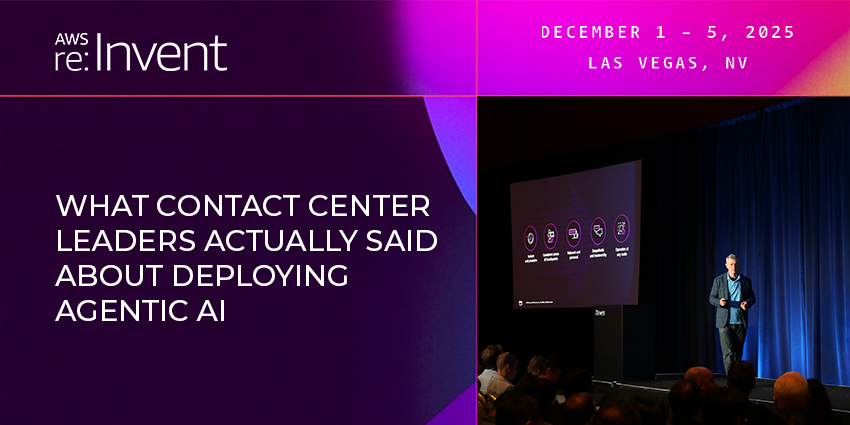High attrition, siloed knowledge, ever-increasing customer expectations… contact centers face many of the same challenges they have for decades.
Yet, they are also tussling with emerging issues, including increased pressure to build relationships with IT and adjacent departments, support new employee needs, and implement AI.
Indeed, 77 percent of customer support leaders feel pressure from executives to deploy AI, per Gartner, with “the typical leader” expected to add five new full-time-equivalent (FTE) roles over the next 12 months to help manage these AI projects.
Such challenges are common across the contact center landscape. However, some sectors experience particular problems more acutely, and some face their own additional, unique obstacles.
Given this, let’s consider three divergent business sectors, assess the most common contact center challenges across each, and raise possible solutions.
Public Sector
Many public sector bodies don’t have a single, unified contact center. Often, they have siloed teams handling different contact types — inbound calls, emails, walk-ins, etc. — across departments such as revenues, benefits, housing, and adult care, alongside internal IT and HR helpdesks.
As such, each department tends to run its own processes and tools, creating inefficiencies galore. Unifying teams behind the same customer journeys, workflows, and solutions is, therefore, top of mind for many support leaders in this sector. That’s not just a technology challenge, it’s also an organizational and cultural one.
Recognizing this, Paul Hughes, Head of CX Sales for UKISA at Mitel, told CX Today: “The priority has to be unifying service teams around the customer journey.
“That starts with understanding that journey, then building better integration, shared data, and smarter workflows that connect everyone, from contact center agents to caseworkers.” – BLOCK
Of course, that’s a mammoth task. However, starting small is okay. After all, Mitel has seen local authorities introduce omnichannel and AI in just one department, improving first contact resolution (FCR) by up to 40 percent, and then scaling gradually from there across the organization.
As Nick Hanna, Head of UK Central Government & Enterprise Sales for Scotland & Ireland at Mitel, summarized: “It’s about identifying high-friction journeys and targeting those for improvement, not ripping everything out and starting over.”
Retail
Differentiation in retail is notoriously difficult, as products are often commoditized and easily replicated. This reality makes customer experience (CX) a powerful differentiator and one of the few ways retailers can stand out in a crowded marketplace.
To achieve this, many retailers are investing in advanced agent enablement tools. Some even combine real-time agent-assist technology with competitive analytics, using AI to scan social media, customer reviews, conversations, and pricing data. As a result, agents gain instant access to insights, talking points, and rebuttals that help them highlight the brand’s unique value during customer interactions.
However, while CX is a clear priority, support budgets in retail remain tight. Thin margins and rising operational costs make lean service models essential. Consequently, many contact centers now deploy AI to automate identity verification, auto-populate agent desktops, and streamline after-call work, saving both time and money.
Lastly, changing channel preferences are hitting retail particularly hard, as marketing and commerce keep introducing brands to new channels, where they’re also expected to provide support. Given this, they’re having to extend their omnichannel strategies, with an emphasis on maintaining context across channels and tailoring experiences especially for younger customers who have different expectations.
Financial Services
Financial services contact centers struggle to balance two opposing customer demands: seamless, automated digital experiences and reassuring human-led advice.
This tension highlights the importance for leaders in the sector to understand their demand drivers, distinguish between transactional and consultative interactions, and orchestrate omnichannel journeys accordingly.
However, developing omnichannel journeys is a challenge in itself, even for seemingly transactional queries, as repeated authentication and context loss create frustration and inefficiency.
Strict regulatory requirements further complicate matters by making data integration across CRM, ERP, and other systems more complex.
To address these issues, many financial institutions turn to virtual agents that identify customer intent, authenticate users, and triage interactions while preserving context. This approach allows contact centers to better analyze demand, introduce targeted self-service for transactional queries, and gather additional information upfront for more consultative interactions.
That strategy may also provoke support leaders into working with other enterprise leaders to pool critical data sources into one source of truth for agents – both human and AI – and gather the information necessary to aid the resolution of specific customer queries.
All the Other Sectors…
Of course, there are many more sectors to consider. For instance, education typically struggles with dispersed helpdesks. Meanwhile, healthcare faces surging contact volumes. In the UK, NHS 24 had to hire over 100 new call handlers earlier this year to stem the flow, despite implementing an online triage system.
Few contact center technology providers understand these problems like Mitel. Sure, it has a long heritage in the space. However, it also delivers sector-specific solutions, integrations, and preconfigured workflows across all the aforementioned verticals (and many others).
Now watch the new guide on best practices for workforce management in the AI-era.
To delve deeper into its enterprise communications portfolio, visit mitel.com







